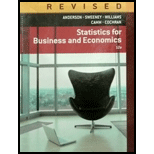
a.
Explain about the given values of
a.
Answer to Problem 24SE
The fraction defective at which the producer would tolerate a probability of rejecting a good lot of 0.075 is 0.03.
Explanation of Solution
Calculation:
An acceptance sampling plan with
Binomial probability
Here
For
The probability of accepting the lot when
Thus, the probability of accepting the lot when
The producer’s risk,
Thus, the producer’s risk when
For
The probability of accepting the lot when
Thus, the probability of accepting the lot when
The producer’s risk,
Thus, the producer’s risk when
For
The probability of accepting the lot when
Thus, the probability of accepting the lot when
The producer’s risk,
Thus, the producer’s risk when
For
The probability of accepting the lot when
Thus, the probability of accepting the lot when
The producer’s risk,
Thus, the producer’s risk when
For
The probability of accepting the lot when
Thus, the probability of accepting the lot when
The producer’s risk,
Thus, the producer’s risk when
Here, the producer’s risk obtained using
Therefore, the fraction defective at which the producer would tolerate a probability of rejecting a good lot of 0.075 is 0.03.
b.
Find the consumer’s risk associated with this plan when
b.
Answer to Problem 24SE
The consumer’s risk when
Explanation of Solution
Calculation:
The probability of accepting the lot when
Thus, the probability of accepting the lot when
The consumer’s risk,
Thus, the consumer’s risk when
Want to see more full solutions like this?
Chapter 19 Solutions
Statistics for Business & Economics, Revised (MindTap Course List)
 College Algebra (MindTap Course List)AlgebraISBN:9781305652231Author:R. David Gustafson, Jeff HughesPublisher:Cengage Learning
College Algebra (MindTap Course List)AlgebraISBN:9781305652231Author:R. David Gustafson, Jeff HughesPublisher:Cengage Learning Holt Mcdougal Larson Pre-algebra: Student Edition...AlgebraISBN:9780547587776Author:HOLT MCDOUGALPublisher:HOLT MCDOUGAL
Holt Mcdougal Larson Pre-algebra: Student Edition...AlgebraISBN:9780547587776Author:HOLT MCDOUGALPublisher:HOLT MCDOUGAL Glencoe Algebra 1, Student Edition, 9780079039897...AlgebraISBN:9780079039897Author:CarterPublisher:McGraw Hill
Glencoe Algebra 1, Student Edition, 9780079039897...AlgebraISBN:9780079039897Author:CarterPublisher:McGraw Hill


